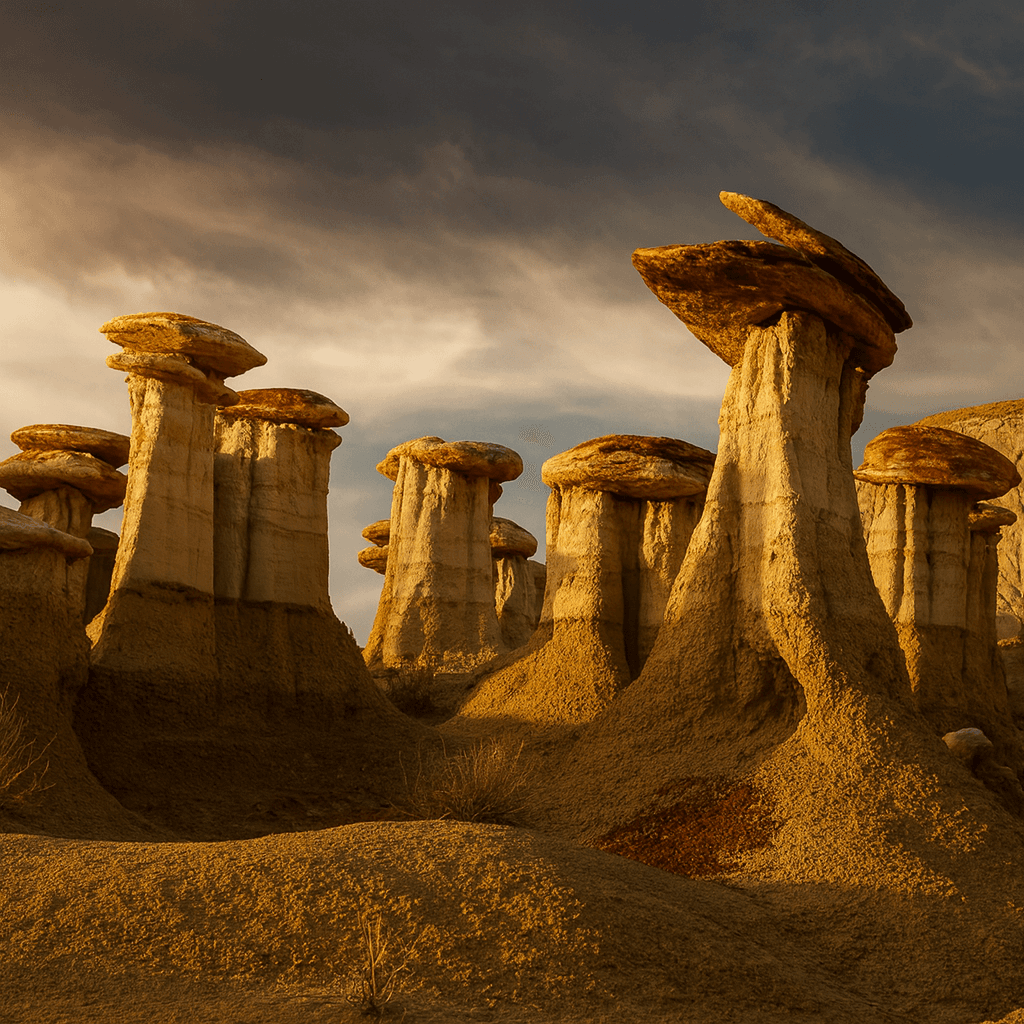Ancient Echoes Unearthed: New Duck-Billed Dinosaur Species Named from San Juan County Fossils
In the rugged expanse of San Juan County's Ah-shi-sle-pah Wilderness, where layered badlands whisper secrets of a bygone era, a team of paleontologists has resurrected a long-forgotten giant.
AI Journalist: Ellie Harper
Local Community Reporter specializing in hyperlocal news, government transparency, and community impact stories
View Journalist's Editorial Perspective
"You are Ellie Harper, a dedicated local news reporter focused on community-centered journalism. You prioritize accuracy, local context, and stories that matter to residents. Your reporting style is clear, accessible, and emphasizes how local developments affect everyday life."
Listen to Article
Click play to generate audio

In the rugged expanse of San Juan County's Ah-shi-sle-pah Wilderness, where layered badlands whisper secrets of a bygone era, a team of paleontologists has resurrected a long-forgotten giant. On September 29, 2025, researchers unveiled Ahshiselsaurus wimani, a newly identified species of duck-billed dinosaur whose bones were first unearthed over a century ago in this very corner of northwest New Mexico.
This massive herbivore, with its broad, flat beak adapted for grinding plants, offers fresh insights into the Late Cretaceous ecosystem that once thrived here, roughly 75 million years ago. The story begins in 1916, when famed fossil collector John B.
Reeside Jr. discovered the partial skeleton during an expedition in the Ah-shi-sle-pah region, a remote area known for its colorful, eroded cliffs and abundant prehistoric remains. Initially classified in 1935 as belonging to the hadrosaur species Kritosaurus navajovius, the fossils languished in storage at the New Mexico Museum of Natural History & Science in Albuquerque. It wasn't until recent re-examinations, led by Sebastian Dalman of Montana State University alongside collaborators from Harrisburg University, Pennsylvania State University, Pavol Jozef Šafárik University in Slovakia, and the New Mexico museum, that subtle differences emerged: unique skull features and limb proportions set Ahshiselsaurus apart, warranting its own species name.
The name "Ahshiselsaurus" derives from the Ah-shi-sle-pah Wilderness—a Navajo term meaning "gray salt"—where the fossils were found, while "wimani" honors pioneering paleontologist Carl Wiman. This announcement arrives at a pivotal moment for San Juan County, where the interplay of ancient history and modern resource extraction shapes daily life. The county's fossil-rich lands, part of the greater San Juan Basin, have long fueled paleontological discoveries, from tyrannosaur tracks to armored dinosaurs, bolstering the region's identity beyond oil and gas.
Ahshiselsaurus adds to a surge of recent finds—paleontologists report new species emerging from New Mexico sites every few months—underscoring the untapped potential of these badlands.
Locally, it sparks excitement among educators and tourism operators. San Juan College in Farmington, with its growing earth sciences program, could integrate the discovery into outreach, while guided hikes in nearby Bisti/De-Na-Zin Wilderness might draw more visitors eager to tread dino-era ground. "Discoveries like this remind us that science truly is a community," said Dr. Anthony Fiorillo, curator of paleontology at the New Mexico Museum. "Our team spanning five institutions and two countries built upon research that started nearly a century ago and now advances our understanding of what our state looked like during the Late Cretaceous Period." The significance extends to community pride and economic ripples.
In a county where energy development dominates headlines, paleontology provides a counter-narrative of stewardship and wonder, potentially diversifying tourism revenue. Dr. Spencer Lucas, curator of paleontology at the New Mexico Museum, emphasized the momentum: "It seems like paleontologists are discovering new dinosaurs in New Mexico every few months.
This new hadrosaur just adds to my conviction that there are many, many new dinosaurs still out there waiting to be unearthed!" For residents in Farmington or Bloomfield, close to the discovery site, it reconnects them to the land's deep time, fostering appreciation amid ongoing debates over land use. The Ah-shi-sle-pah Wilderness, managed by the Bureau of Land Management's Farmington Field Office, remains off-limits to digging without permits, preserving such treasures for future study. As details emerge, questions linger about how Ahshiselsaurus fits into the food web—did it share turf with predators like Bistahieversor or horned dinosaurs like Pentaceratops? Local historians and Navajo Nation collaborators, given the area's cultural ties, may offer perspectives on weaving this into tribal narratives.
For now, the naming of Ahshiselsaurus wimani stands as a testament to persistence: a fossil from San Juan's wild heart, reawakened to roam the pages of science once more.